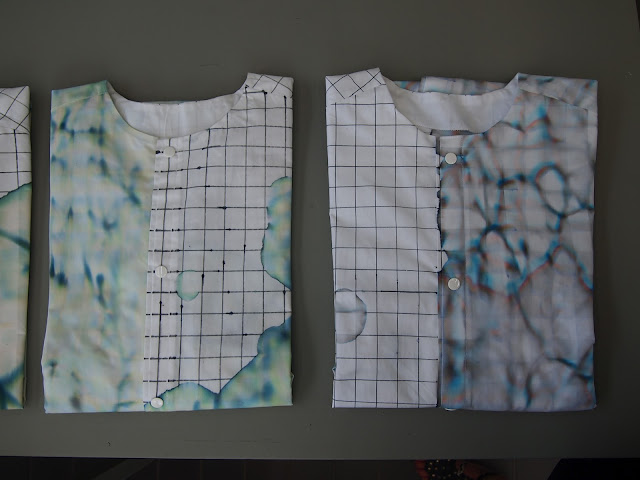
The Rietveld Art Academy in
Amsterdam hasn't have a name when it comes to its fashion department and every
year the number of graduates in fashion design declined, with probably
this year as it's all-time low with just three fashion graduates. But better
fashion times are coming.
Since a year the fashion
department has a new director, and not the least: fashion designer Niels
Klavers. Together with another big fashion name Oscar Raaijmakers, Klavers trained
and mentored the fashion graduates Morta Griskeviciute, Poul Brouwer and Jolka
Wiens. These graduates told they had the best final year of their fashion
education thanks to Klavers and Raaijmakers, because just being with three
students you can get the most of attention and guidance, especially from two enthusiastic and professional teachers.
The energy and quality of
this years graduation collections is high and stood out in clear concepts,
research process and experimentation. These three collections and having Niels
Klavers and Oscar Raaijmakers on board give a new appeal to the Fashion
Department of the Rietveld. Result: a dozen of future fashion students have chosen
to apply for the Rietveld now instead of the better-known fashion academies out
there.
Although fashion week is
over and everybody is enjoying their holidays, in the magnificent store of
Soepboer & Stooker we can still admire the Rietveld graduation collections
of Morta, Poul and Jolka until July 28th 2012.
The store of Soepboer & Stooker is at Overtoom 9 in Amsterdam, open until 4pm and worthwhile visiting.
The store of Soepboer & Stooker is at Overtoom 9 in Amsterdam, open until 4pm and worthwhile visiting.
POUL BROUWER's BLURRING GRIDS OF SHAME
Poul Brouwer's collection
called SHAME, focusing on personal matters he feel or felt embarrassed by or
struggled with, like being a red head or liking the Spice Girls as a young boy.
The feeling of shame he translated in covering up true identity for the outside
world using blankets as his starting point. What kinds of silhouettes take
shape when folding, wrapping and layering stuffed blankets on the male body? His
pattern design was formed by coincidence. Amazed by the pattern of common
tiles, he draw with water-soluble black markers grids by hand on cotton shirts,
and, again, by coincidence, discovered the black ink blurred in a thousand colours
when dropping water on the thin lines. It fits his concept of SHAME and to
resolve the shame, because instead of 'walking the line', Poul is more the kind
of person to push the envelope and be different and colourful.


MORTA GRISKEVICIUTE's COLLIDED FASHION RUINES
'Fashion has a pragmatic
aspect that I missed in other art disciplines; it combines creativity,
technical skill and 3D', Morta explains in an interview. She is not per se a
fashion designer, more a creative director with an educational background in
illustration and fine arts. 'My collection resembles the way I draw: expressive
yet controlled'. For her graduation collection she was inspired by the photos
of Robert Polidori, who captures the chaos of decaying and neglected interiors,
ruined by disasters, wars or by the hand of time. Morta is fascinated by
beautiful ugliness, combining 'trashy elements with contradictory elements; chaos after the chaos'.
She focussed especially on the textures, the colours and the flaws of the
interior and its materials: torn wall paper, moss on rotten wood, scaled off
paint of former luxurious places like opera houses, ball rooms, cinema's or
warehouses, and translated these images in textiles -like furry flocked
plastic, paper and knitwear- and in shape - expressive and loose- but as a
whole all well executed.
MIMICRY DRESSES OF JOLKA WIENS
'I am not your typical fashion person being
mostly excited by the psychological and social aspects of design', Morta
Wiens explained and continued: 'What does a fabric like neoprene expresses
and what kind of experience gives it when wearing it?' Her designs of
laser-cut neoprene are flat 'dead' pieces and need a body to come alive and to
reveal its identity. Although neoprene and laser-cutting is considered as 'done
and dull' due to the popularity of the raw material on todays runway, Morta
said it motivates her even more to prove neoprene and laser cutting can still
astonish. For her graduation project she researched the anatomy of the human
face, how the muscles are placed and creates different facial expressions,
mimicry, because the face can communicate on many different levels. This
concept she translated in her laser-cut graphics and designs. Like a face, a
body gives new shape and therefore a new expression to her cobweb black and white fashion designs.












































